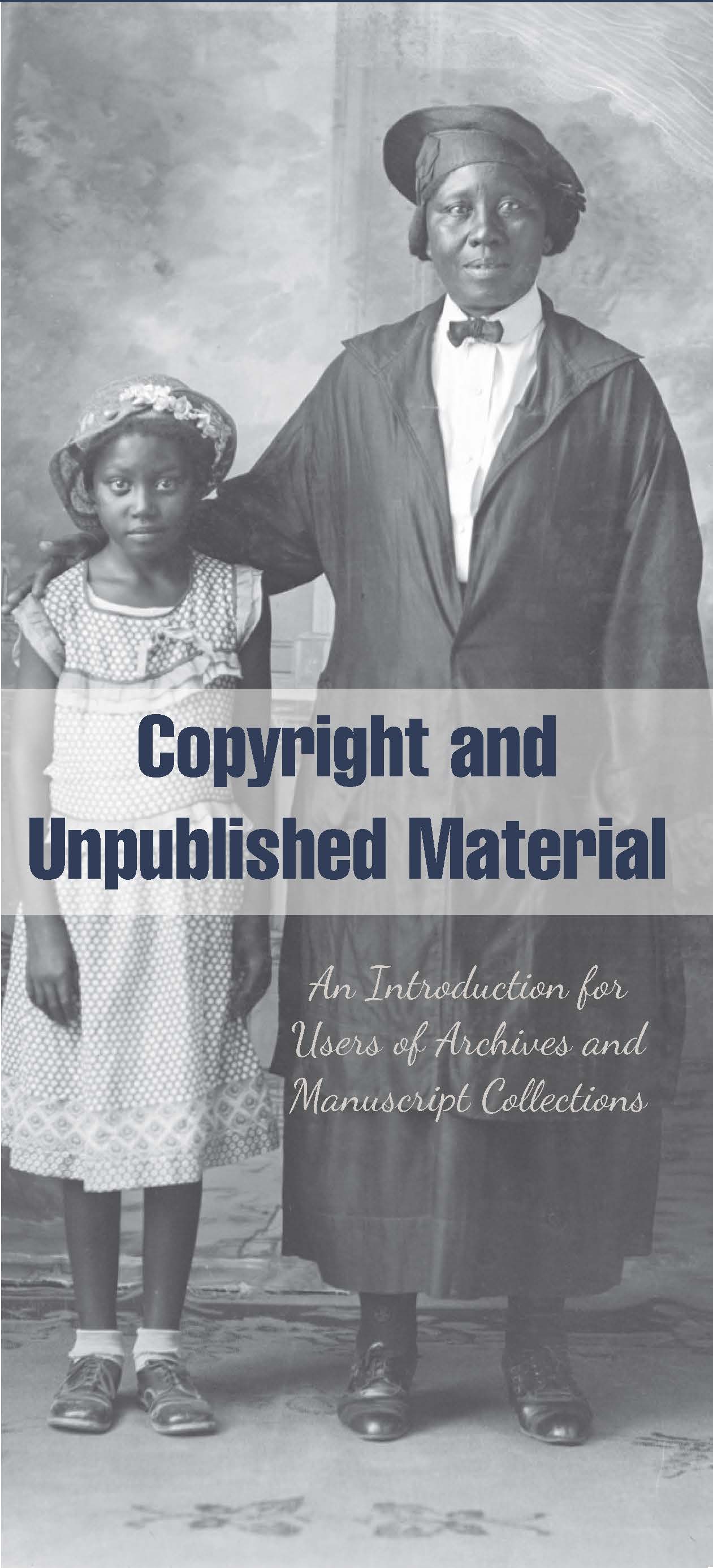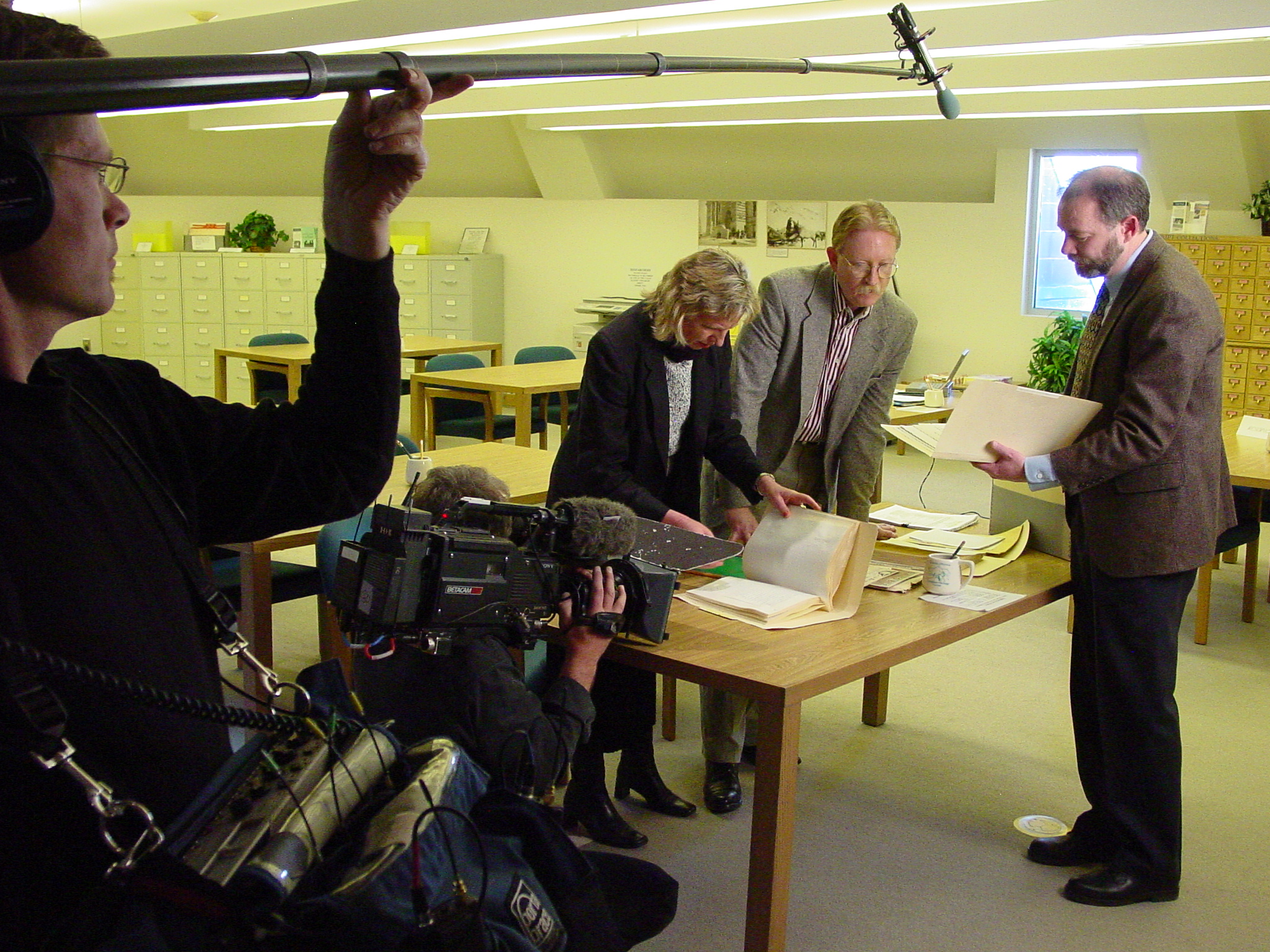- About Archives
- About SAA
- Careers
- Education
- Publications
- Advocacy
- Membership

U.S. Copyright law governs, among other things, using copyrighted material in research papers, published books and articles, web pages, exhibits, plays, songs, etc. Ultimately, you are responsible for determining whether you need permission to make use of a work.
Copyright protects works of original authorship the moment a work is fixed in some tangible form. Exceptions are works produced by the U.S. government and some state governments. Under U.S. law, the simple act of fixing the work in a “tangible medium” is sufficient to establish the creator’s copyright in unpublished material—no copyright statement (e.g., © 2014) is mandated, nor does the item need to be registered with the Copyright Office. The law distinguishes between published and unpublished material and the courts often afford more copyright protection to unpublished material when an asserted fair use is challenged.
The law defines “publication” as offering for distribution or actually distributing copies of a work to the public by sale or other transfer of ownership, or by rental, lease, or lending. Publication has been interpreted by the courts as distribution to numerous individuals who are under no explicit or implicit restrictions with respect to the use of the contents. An informational text, such as this one, is published if it is distributed to the public, whether or not it is offered for sale. Generally, material is considered unpublished if it was not intended for public distribution or if only a few copies were created and distribution was limited.
Copyright in an unpublished work lasts for the life of the author plus 70 years. If the author (or the author’s death date) is unknown or if the author is a corporate body, then the term is 120 years from the creation date for the work. Therefore much unpublished material in archives or manuscript collections is likely to still be under copyright.

The fact that the archives or repository holds the physical document does not mean it also owns the copyright. Many donors or sellers, when they transfer collections, retain the creative rights to the material for which they are the rights holder. (Archives that serve as the repository of record for materials created by a parent organization will be able to communicate the organization’s procedures for managing copyright permission requests.) Only when rights holders assign the copyright in the work to a repository can the latter (and only it) give you permission to publish. But even when copyrights are transferred along with a collection, the repository may not receive copyright in all of the material, whether analog or born-digital. This is because rights holders can transfer only the copyrights they own, and in most cases donors will own copyright only in material they created. For example, donors would generally own copyright in photographs they took or in letters they wrote to others; however, they may not own (and therefore could not transfer) copyrights in photographs taken of them by someone else or letters they received written by others. The original rights holders may also have transferred copyright to a third party, such as a publisher, and thus no longer own the rights to works they originally made.
Note that the repository that owns the item you wish to publish may charge fees for publication (even if it may not own copyright in the work) in addition to any fees a rights holder might charge. Any such stipulation is separate from copyright permission and is determined by a repository’s use policies.
Sections 107 and 108 of copyright law provide archives and libraries with a limited authority to make copies of copyrighted material without permission under certain conditions, such as when the copy is to be used for private study, scholarship, or research.
The fair use doctrine (as codified in Section 107) recognizes that there are uses that do not infringe on the rights of copyright holders and provides a defense for the use of copyrighted works without permission from the copyright owner. The statute does not say what is or is not fair. Rather, courts evaluate fair use cases based on four factors, no one of which is determinative in and of itself:
Determining that a use may be fair involves conducting an analysis along a continuum of “less likely fair” to “more likely fair.” Helpful aids in conducting such an analysis can be found at the resource page of the Society of American Archivists’ Intellectual Property Working Group.

Yes, it is possible. Because of the case-specific nature of fair use, you can only know whether a use is fair if a court rules it to be so. However, several authorities have produced guides to help people take advantage of this vague, but very useful, exception to copyright. If there is a question about whether a particular use is fair, it is always safe to seek permission.
The Society of American Archivists’ Intellectual Property Working Group has produced a document that is designed to provide guidance on this dilemma—commonly known as the Orphan Works problem—and that suggests search strategies for identifying the creator of a work, identifying the work’s copyright holder, and for locating the copyright holder.